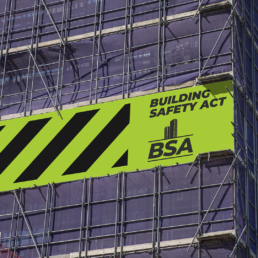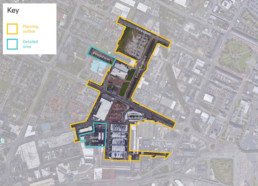Project Four Teams Up With Place For MIPIM Debut
“It has been a long time coming for Project Four,” said managing director Alan Robson about taking his company to the international property conference for the first time.
Robson is a MIPIM veteran himself, having attended the event multiple times before he created Project Four Safety Solutions. MIPIM, he pointed out, is a great place for networking and can contribute to a business’s growth plans.
“MIPIM is the next step in our growth and profile-raising plans within the North West and wider UK property markets and will support our new directors and offices in Scotland and London,” Robson said.
It is also a prime spot to share Project Four’s expertise in the Building Safety Act, he added.
The decision to attend MIPIM, which will be held 12-15 March 2024, was cemented after the Project Four Team had a successful UKREiiF experience in Leeds.
“We went all out at UKREiiF and got a lot from it,” Robson said.
In attending MIPIM, Project Four has chosen to partner with Place North West to help Robson and fellow director Max Meadows maximise the opportunities available in Cannes.
“Project Four has done some great work with Place North West over the last few years and we can see how Place will help us make the most of the MIPIM experience – not just for the few days in Cannes, but with our pre- and post-conference strategy,” Robson said. “Plus, we want one of the Place North West baseball caps.”
Dino Moutospoulos, managing partner and head of commercial at Place North, said: “We are delighted to continue our recent video work with Project Four by showcasing their expertise at MIPIM.
“Alan, Max, and the team have been leading the conversation on risk and fire management for some time and this sector is in for a lot of focus in the coming months and years,” Moutsopoulos continued.
“Place is proud to call Project Four a Place MIPIM Partner and to help them spread their advice that ultimately helps improve the built environment and protect lives.”
Place is offering a variety of bespoke business development and thought leadership opportunities at MIPM. These include boat charters, event sponsorships, and video commentary services.
You can hear more about Place’s MIPIM offerings at our MIPIM preview event on 12 September. Held at WSP’s office on First Street in Manchester, this event will include regional leaders as well as officials from RX, the organiser of MIPIM. If you are interested, please contact mipimevents@placenorth.co.uk.
Place North is already working on MIPIM strategies with clients and partners Together, Net Zero UK, Euan Kellie Property Solutions, Morgan Sindall Construction, JMW Solicitors, Luma Marketing Realty Management, and Marketing Manchester.
Interested in making the most of your MIPIM experience? Email Dino Moutsopoulos to find out more about how Place can boost your brand’s profile.
Why work with Place North West?
- Proven: As MIPIM veterans, we know how to best reach the high-profile audience attending the event. We also know the market and have multiple outlets where we can promote your content, with your videos appearing on our newsletter, website, and social media channels during or after MIPIM.
- Hassle-free: We do the hard work for you. We can source participants, suppliers, and venues, put on the event, and figure out all the logistics so you can focus on maximising your time at MIPIM.
- Flexible: With a variety of packages and services, we can mix and match to craft the perfect MIPIM campaign for your brand within your budget.
Opportunities for MIPIM 2024 include:
- Corporate boat charters: Enjoy a relaxing cruise on the Mediterranean with the industry’s biggest decision-makers on the Place MIPIM boat, which allows you to escape the crowds and engage in undisturbed networking with drinks and canapes.
- Event sponsorship: Place is hosting an arrival reception on the Monday to kick off the week of networking in Cannes as well as an “in conversation with…” breakfast event on the Wednesday – two great opportunities to get your brand in front of a robust group of high-level property professionals.
- Roundtables: Held in-person and turned into videos later, these roundtables can stand the test of time and reach a wider audience than a more traditional roundtable ever could.
- ‘Fireside’ chats: These intimate one-on-one video interviews provide a more informal setting that’s perfect for digging into complex and important topics in a way that’s accessible to those at MIPIM and beyond.
- Event management: Whether you’d like to have a private drinks reception, breakfast, lunch, or dinner, Place can help source a venue and find you the perfect guests for networking and engaging discussions.
- Vox pops: Capture the excitement of your announcements, launches, and events with quick interviews with your attendees.
- Advertising: Before and during MIPIM, get your brand in front of the readers of Place North West in multiple ways, including website banners, an advertorial piece, branded editorial reports, and more.
Interested in working with Place North West? For more information or to book opportunities, contact commercial director Dino Moutsopoulos by calling 07803 988 112 or emailing dino@placenorthwest.co.uk.
You can also explore more of what Place has to offer by downloading our 2024 media pack.
Google…Search Alternative Words For Recruitment?
Joining P4, potential + possibility…the PERSON spec!
At P4, we're not just offering a job; we're building a space for individuals who are committed, ambitious, self-motivated, and strive for growth (whilst still having fun)! Here's a sneak peek into our culture, and life at P4.
Traits We Admire
- Self-Motivation + Drive: We believe in individuals who don't just meet expectations but exceed them with their internal motivation. We can't give you this - its on you.
- Commitment to Technical Development: Lifelong learners, this is your home! We value those dedicated to staying ahead in their technical prowess.
- Be keen to learn, take the rough with the smooth (the challenges) and commit to a career route path with rewards + incentives.
Expectations We Set
- Deliverance is Key: We're all about results. If you're ready to take on challenges and deliver, you'll thrive here.
- Responsive + Engaging: We love ideas and conversations. Be ready to not just respond but actively engage with your team.
- Accountability + leadership at all levels.
The foundation of our success lies in repeat business, a testament to our consistent delivery. To uphold this ethos, we depend on our dedicated team
What We're Not Looking For
- No "Computer Says No" Mentality. Solutions-driven minds are our forte. We don't want barriers; we want problem-solvers.
- The glass is half empty type stay away.
- People who want to work from home in isolation + not be part of the team. We offer hybrid solutions + balance, but we want to build a team together.
Anyone can fill in an F10 and collate a hazard + risk register – we proactively work with clients and challenge design teams to effectively apply the hierarchy of control + create better buildings.
A Glimpse into Your Journey
- Challenge + Engagement: P4 is your platform to challenge yourself, engage with your work, and support your colleagues.
- Growth Platform: Our infrastructure + market position isn't just bricks and mortar; it's a catalyst for your career.
- Expect support and a work-life balance that fosters growth.
The Perks (because these things are important to us too)
- Earn the trust, perks, and freedom that come with being a part of P4.
- Birthdays off, and we go above the sector's holiday standards!
- Healthcare + benefits through Vitality Health
- Christmas holidays off (without using holiday allowance)
- A personal development plan + career route map – to ensure progression + incentives
- Regular socials and hearty team lunches
- 1-day additional holiday gifted after three years’ service (post probation)
- 2-day’s holiday gifted after five years’ service (post probation)
- Kids/family school pick-ups + after school club commitment/pledge
- Charity donations + challenges
- Volunteer programs, maternity/paternity packages, and even a moving house pledge, employee referral scheme – because life happens.
Culture at P4
- Not a Corporate Machine: While growth is our objective, we're not a soulless corporate giant. We're a close-knit group of individuals from all walks of life, and we treat you as one.
- An environment to thrive.
People, Not Just Positions
Meet with Leaders Anytime: Your ideas matter. Meet with directors whenever you need.
Family-Friendly Office Dogs, kids...they're all welcome! We believe in blending work and life seamlessly.
Diversity & Wellbeing
- A pledge to diversity and a strong focus on health and wellbeing.
- We believe in the strength of diverse perspectives and a healthy, happy workforce.
P4 Monthly Team Day
Your Journey Starts Here
This isn't just a job; it's a long-term move. Take your time, understand the role, scope, expectations. We're patient, and we're committed to success. Things will evolve and where you start will look very different in 1, 3, 5 years! This isn't a process we can rush, and we like to discuss, plan, and thrash out all potentials/objectives etc. some appointments have taken 6-12 months, but have worked successfully + continue to flourish at P4. The talent we seek may not be immediately ready to move - personal commitments (paternity, exams, financial etc.) and could take several months to nail down.
We view recruitment + talent search as an ongoing process, not a reactive one - happy to chat in confidence at any time.
Ready for a career where your potential finds its true home? Contact P4 today!
See what the team says:
Karen Benson (Office + Support Team Lead) karen@projectfoursafety.com
I’ve worked alongside Alan and Max from the beginning of P4 and have been fortunate to see it flourish and grow over the years. My role has evolved immensely, and the learning and growth gained has allowed me to develop and enhance my skills and contributed to my job satisfaction. Yes, the workload is heavy, but I can deal with this as I feel supported, well looked after, motivated and appreciated. It helps that the people I work with are great, good fun and supportive, I couldn’t imagine working anywhere else.
Dave (Advisor): retrained from Jaguar Land Rover dave@projectfoursafety.com
After 10 years working in various roles at Jaguar Land Rover and having completed the NEBOSH General Certificate, in May 2020 I made the leap to join P4 and take up my first role in Safety.
The factory environment was all I had known so to be tasked with working from home amid the pandemic took some getting used to. Thankfully, the environment was ideal. A close-knit team who ensured the transition was seamless. All whilst working in a fast paced, often reactive industry. Safe to say, there’s never a dull day.
Steven (Senior Advisor) steven@projectfoursafety.com
Initially, I was sceptical about re-joining a "consultancy" as work-life balance is usually non-existent when a consultant, however I couldn’t have been more wrong due to the autonomy and trusting ethos within the business.
From day one I have felt part of the team, and in my time here so far, it’s been great to see the company grow year on year. The overall approach to both delivery and continual personal development is first class and like non-I’ve experienced before and that’s credit to the team here at Project Four.
Alan (MD):
It’s not always pretty, but we work hard, are committed to personal growth, work life balance. I like to finish early on a Friday, I don’t apologise for that.
alan@projectfoursafety.com +44(0)7786447777 (text, whats app, call, email anytime).
Industry Must Act Now to Comply with Building Safety Laws
The Building Safety Act 2022 received Royal Assent in April, and its myriad legislative changes are due to come into force over the next 12 months with implications for developers, contractors, landowners, and others, writes Alan Robson, managing director of Project Four Safety.
Collectively, the team at Project Four Safety has been reading hundreds, if not thousands, of consultation documents, press releases, and associated documents on the incoming new laws. So, without giving you War and Peace (first published in 1867 with 1,225 pages), this series of three articles will aim to provide a brief but effective update on the way the act is impacting the property industry.
The Building Safety Act 2022 is the government’s main response to the Grenfell tragedy of 2017 and came about from recommendations made in the high-profile Hackett Report led by Dame Judith Hackett, a past chair of the Health and Safety Executive.
The act, which received Royal Assent in April, will run alongside the Fire Safety Act (FSA), which received Royal Assent in 2021. Both pieces of legislation are aimed at bringing about fundamental change to the building safety system in England, and the duty holders mirror those under the Construction (Design and Management) Regulations of 2015 – namely, designers, principal designers, principal contractors, and their clients.
Listen to Project Four Safety and Place North West‘s podcast on the Building Safety Bill
The biggest myth-buster of this article – and to address a key source of confusion among industry professionals – is that the Building Safety Act 2022 will impact all stages of construction and those parties involved. Yes, the short-term priority is high-rise, high-risk residential buildings given the dangers highlighted by the Grenfell fire. But, post-2024, the act looks to tackle the wider construction sectors through subordinate legislation.
The key changes and focal points for the industry to start considering are:
- that the Building Safety Regulator (BSR) will coordinate and enforce the act, with a specific objective of ensuring the safety of people in and around buildings and to improve building standards
- the Health and Safety Executive becomes a statutory consultee for planning applications
- the BSR will become the building control authority for high-rise buildings
- that early engagement with the BSR is encouraged
Practical changes this brings about are broken down in the act in the form of three gateways introducing requirements at key stages in design and construction – planning; before building work starts, and after construction has completed. The key requirements to note are:
- a fire statement is to be submitted as part of the planning process – this is a new requirement as of August 2021 when that and other Gateway 1 requirements took effect
- at pre-construction stage, a clear focus is now placed on design change control, competence, and compliance with building regulations
- prior to occupation of the completed building, a suite of information is now required to receive construction sign-off and handover
We’re aiming to work with clients to proactively demonstrate compliance for each gateway, with the intention of avoiding queries from the BSR later.
What is more, the Building Safety Act’s subordinate legislation will land throughout 2023 and 2024, relating to the fields of competence, procurement and the ‘golden thread’ (what and how information about a building is kept, to enable parties to understand a building and keep it safe).
All of this makes for a busy couple of years ahead and I’ll be exploring this further in the next two articles to be published. How project teams can prepare now is to ensure that they are satisfying their obligations under the 2015 Construction (Design and Management) Regulations – especially, SKET, DRM strategy, HSF information, and capturing and evidencing significant design changes – and by making sure robust processes are in place to keep track of these obligations.
Two important tools that will help to drive further changes are the Building Safer Future Charter and the Code for Construction Products, both of which are worth reading.
Although the industry has a period of transition ahead – and we’re all busy! I can’t stress enough the need to take action to start the journey of becoming fully compliant with the new laws.
Building Safety Act: What You Need to Know About the Coming Changes
With so much change happening across the industry, here is how we are helping clients and the wider industry focus on key priorities without getting overwhelmed, writes Max Meadows of Project Four Safety.
Last year was filled with consultations, new legislation, and guidance changes – and 2023 is shaping up to be just as busy.
As tempting as it may be, there’s no need to bury your head in the sand. At Project Four Safety, we’ve spent months analysing the act and all the changing guidance. We’re ready to distil that vital information to you.
We’ll start with a summary of the key dates for this year that you need to have marked on your calendar. Then, we’ll discuss what you need to be doing right now to prepare for this next stage in the building safety reform process.
Dates you need to know
April
- Registration for existing occupied high-rise residential buildings opens.
October
- Gateway 2 and Gateway 3 are introduced. Gateway 2 is the construction control plan and fire and emergency file. Gateway 3 is the mandated completion certificate.
- Registration deadline arrives for existing occupied buildings – all new buildings will have to be registered before being occupied from here on out.
- The building inspector and building control approver registers open.
- The Building Safety Regulator becomes the new building control authority for high-rise residential buildings.
- Developers must apply to BSR for building control approval before beginning work on any high-rise residential building. Note that this new rule is effective starting on 1 October.
What you should be doing now
A great starting point for the road to change is ensuring that you are compliant with Construction Design and Management Regulations 2015. CDM 2015 maps out how to improve health and safety within the built environment.
Every duty holder for a project – whether you’re a client, designer, principal designer, or principal contractor – needs to be satisfying the duties called for under CDM 2015.
This is not just our opinion at Project Four – getting on board with CDM 2015 is also the suggestion of Dame Judith Hackett, who led the government’s Building Safety Future Report.
So what does this mean in practical terms?
- Appoint duty holders as early as possible – provided you are able to do due diligence to ensure those you recruit can reflect what the legislation calls for. Often we see appointments that have a mishmash of various duty holders – such as having duties of the principal designer (that’s regulation 11) and the client (that’s regulation four).
- Ensure those appointed are able to do their task safely and competently. CDM 2015 focused on skills, knowledge, experience, and training. The Building Safety Act 2022 shifts that focus to skills, knowledge, experience, and behaviour.
- Start your design risk management and health and safety file from the first day. Agree the format for this early on. In those files, be sure you are capturing key discussions, solutions, and challenges. Include the outputs from your project directors. If you capture information from each stage of the development process, you can pass this along when the project is handed over. If your building is higher risk, than the operator will need to share this information to the BSR so it is key that there are no gaps.
- Educate and upskill your project teams about building safety changes. It is hugely concerning that not enough duty holders and organisations are planning or preparing for the next phase of this legislation. There is a lot to do!
- Engage with the building control body appointed to ensure that the agreed design, construction method, and any design changes comply with building regulations. This has always been key under CDM 2015 – but its importance was emphasised with the Hackett Report and BSA.
- Engage with the building operator and their accountable person as soon as possible. Discuss regularly with the operator about how to safely manage residual risks, including fire safety. Customise your handover information – as an industry we really need to move away from just handing over a generic hardcopy handover pack without a briefing.
We get it. There’s a lot of information to digest. We’re hosting a series of open sessions to help brief the industry on these changes and we’ll be publishing more stories here on Place North West to keep you updated. You can expect a future edition that delves into the details around Gateway 2 and Gateway 3 – as well as competence requirements.
There is No Time to Waste on Building Safety Act Compliance
The time for talking is over, now is the time to act to get your business in compliance with the new regulations, writes Alan Robson, managing director of Project Four Safety.
The Building Safety Act is here, it has Royal Assent, and enforcement is on the horizon. This month sees the official launch of the Building Safety Regulator and the requirement to register occupied high-risk buildings.
At the same time, we are hurtling at pace towards the introduction of Gateway 2 and Gateway 3, which will be crucial steps that must be done in order to achieve compliance for your project. They follow the introduction of Gateway 1 in August 2021.
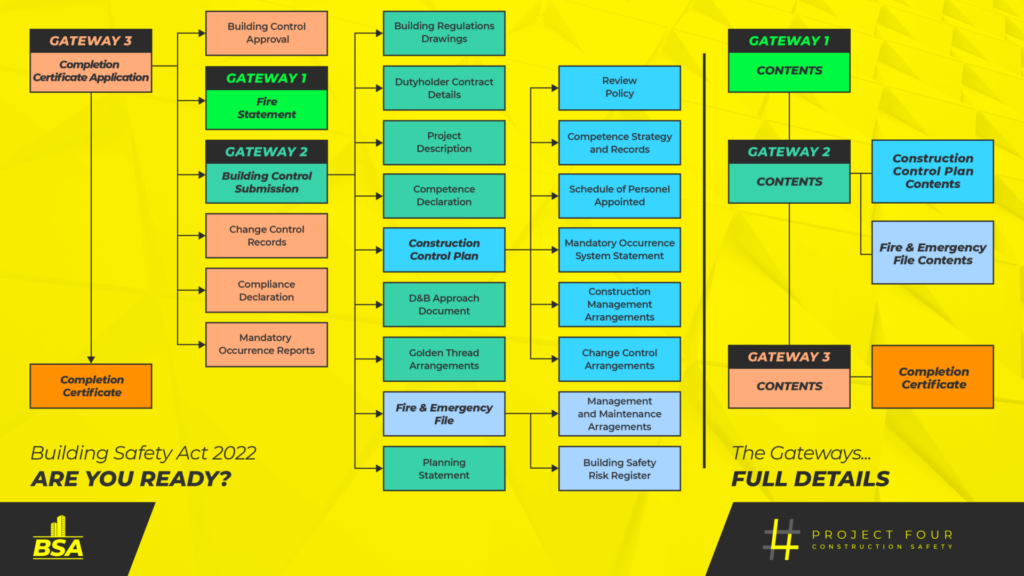
As you can see, there really is not any time to waste.
That was the sentiment echoed by Dame Judith Hackitt, author of the independent review of building regulations for the government, when we saw her at the second Culture Change in Construction conference in March.
Her keynote speech posed an important question for the industry: are you with the leaders or the laggers? In essence, will you be at the forefront of making the industry safer or will you resist change as long as possible knowing that you will have to embrace it eventually?
And we all will have to embrace it. Excuses around waiting for subordinate legislation will not act as any defence for why you chose not to move forward with the newest building safety regulations.
We are concerned – and so is Hackitt – that the penny has not yet dropped within the industry. Too often people ask if us BSA is ever going to happen (yes, it will) and tell us that it does not impact them because they do not do high-rise residential (yes, it does).
It seems to me that many industry stakeholders have failed to truly consider the Building Safer Future report produced by Hackett in May 2018. Obvious delays in enacting the report’s findings (we’re looking at you Covid-19, general election, and Brexit), plus the legislation’s complex nature have led many to bury their heads in the sand when it comes to the fact that come October the Building Safety Regulator will be enforcing these new rules.
At this rate, many individuals and organisation alike will be in breach of significant chunks of legislation.
Project Four has been planning for the release of this legislation for more than two years. We have been growing our team strategically so that it now includes a host of specialist construction professionals who know the new rules inside/out. This includes architects, surveyors, fire specialists, and executive-level safety professionals.
We want to ensure that no matter your field, you understand what BSA means for you and what you need to do to be compliant.
One of the focal points (and a good take away from your efforts for reading this blog) is competence. But this will not be compliance as we know (or think we know) based on the industry response to CDM 2015.
I often use the term in our briefing sessions: “Think of the BSA like CDM, but on steroids”.
That means achieving competence is going to need serious thought. Competence will need to better planned, structured, considered, and maintained.
Competence is an ongoing process that should not, like many things in safety, be viewed as a box ticking exercise. Legislation is helping drive this point home, mandating that there be evidence of continuing professional development.
Developing a building’s safety case should also be on your company’s to-do list. The safety case is significant as it brings greater and clearer responsibility on individuals to ensure that a building is safe and continues to be so.
A safety case reminds us all that people are at the heart of building safety. Unsure of what this looks like? Don’t worry, we’ll have more on that in another column later this year.
In the meantime, it is clear that there is a lot of work to be done. Change is happening. We, as an industry, need to embrace it and start now on preparing what will be required. It is clear that the government is not slowing down in its efforts to ensure Grenfell never happens again. We need to do the same.
Meet the Authorities: Public-Private-Partnerships
Very short + to the point update. This will be my last blog pre-summer break, and a great way to go into the summer recess (though there are events throughout). Another cracking in-person event, this week in Manchester at the fabulous The Lowry Hotel - in (yes, really) the Manchester sunshine! These face to faces are great, not just for business but our mental health - to socialise, meet new people, see friends, eat bacon butties. Apologies for focusing on the Wirral/Birkenhead parts - I am unashamedly, utterly and completely pro-Birkenhead (that's where I live) - so particularly interested in Alan Evans updates.
The first speaker set the scene well for the morning's debate, discussion + other panel speakers. Emma Birkett, heritage director, Rochdale Development Agency. Conservation + regeneration themed, heritage led regeneration (great to see this isn't an issue specific to only Liverpool). Blessed with historic buildings, Oldham has successfully repurposed its town centre with heritage led regeneration. When demolition is simply not an option. Mixed results, it has worked but need to use data and learn (and share). Heritage assets often seen as a barrier to development, other highlights raised: demand review of planning laws, earlier engagement with experts + those with the right knowledge + experience. Example used of projects that simply wouldn't be do-able (or of interest) to private sector developers in isolation, needs a PPP partnership. Funding is key, along with the business case - weakest area of regeneration and conservation (especially for PPP). Bespoke social value strategy, not national generic approach.
Panel ONE, with Emma Birkett: Phil Mayall, board director, Muse Developments. Kevin Riley, director, WSP. Barry Roberts, managing director – North West, Morgan Sindall Construction. Roger Frith, head of strategic regeneration & development, Oldham Council.
Phil Mayall: Conservation can add value its not a case of either or. Time, policy, desire needed - history adds value and must be acknowledged, considered + embraced. Community pride is also an important factor. Need brave LA's. Town centres: Specific purpose and relevance to area - look inwards first before looking out. Not simply saying we want the same as Rochdale or the same as Manchester. This will lead to failure, as is evident with town centres right now. Focus on self/specific area not others. PPP is incredibly complex to achieve, so many factors why: technical, cost, social, uses, multiple sectors, multiple stakeholders to satisfy.
It was great to hear Barry Roberts discuss projects across the region, and even better that they were projects Project Four are involved with - Knowledge Quarter (Liverpool) and Hammerstone Road (Manchester).
Mark McNamee Cityheart: a new arrival to regeneration business. Successful developer for Wigan's, The Galleries (CGI below). Public sector authorities look at companies not people (we echo and support that). Mark highlighted the obscure requirements/criteria, often sought after by public sector bodies - that mean the LA's don't always end up with the best fit / right developer. What is needed: an intelligent timeline, a Borough wide skills strategy, linked up thinking, not just centre. The Galleries - asset seen as a barrier to growth, diverse requirements, REPURPOSING (term used many times through the session today). Get people back into Wigan (opening up the place). Towns are the new cities? Leisure will drive this scheme. Lots of F+B a mix of local and national partners. Contributing factors for a successful PPP: Council champion, council drivers, political buy in, team ethos, understanding public sector.
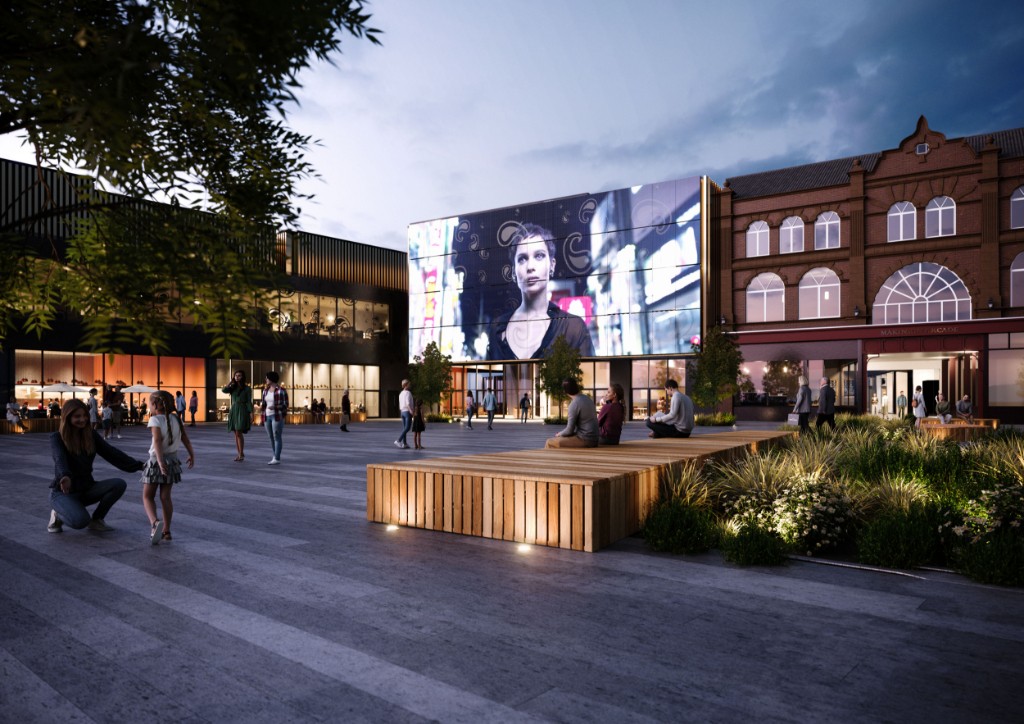
Panel TWO, with Mark McNamee: Richard Laming, senior director, Turley. Darren Jones, development director, Nikal. Alan Evans, director of regeneration & place, Wirral Council.
Alan Evans: Experience is critical. Ingredients for PPP: framework, give developers confidence, design code, strategic plan, will drive quality. Two significant developments (1) Wirral Growth /Town Centre (and several other sites on Wirral) + (2) Peel, both very different. Birkenhead Town Centre has been in decline for 20-30 years, footprint too big, weak planning framework, infrastructure needed / council works needed to achieve desired outcomes, procurement is painful for both sides. Peel's Wirral Waters - the LA has less control but been in making for a long time - co-produced council + Peel with other partners, such as LJMU, Mersey Maritime to create educational and skills drive, but a very different model to town centre. Time and expensive procurement as highlighted by other sneakers. See more: https://wirralgrowthcompany.co.uk
Competitive dialogue / procurement process (Mark) could spend 500k to 1million and not be successful. Room for improvement, procurement. Scoring. Pagabo framework (https://www.pagabo.co.uk/) is being looked more favourably because of this, we would say speak to our friends at Procure North West, Robbie Blackhurst.
Refreshing to hear Alan acknowledge the failure of Wirral in recent years to act as an extension to Liverpool, something that has always aggrieved me.
Based on the recent events attended by me personally and my co-Director Max Meadows - we have concluded, and this won't come as a surprise, that Planning and Procurement are the biggest restrictors to development right now, shortly followed by the 'supply + demand' for materials.
Enjoy the Summer and England's Euro Campaign.
Cheshire Development Update (Place North West)
So, my second face-to-face event of the week. And despite the dreary weather when arriving into the fine City of Chester at 7.30AM, the vibe in the room was ace. I even enjoyed the 'event-coffee' which was as awful as it ever was, please don't be offended (I've missed it).
Understandably, there was some people I spoke to whose offices hadn't even reopened (don't start me on that) and were slightly apprehensive - which despite my 'let's get back to it' attitude, we do need to have empathy. However, hats-off to Place North West on the pre-attendance briefings/advice, investment in staff training, event space layout and setup, this would reassure the most anxious of people...very well done.
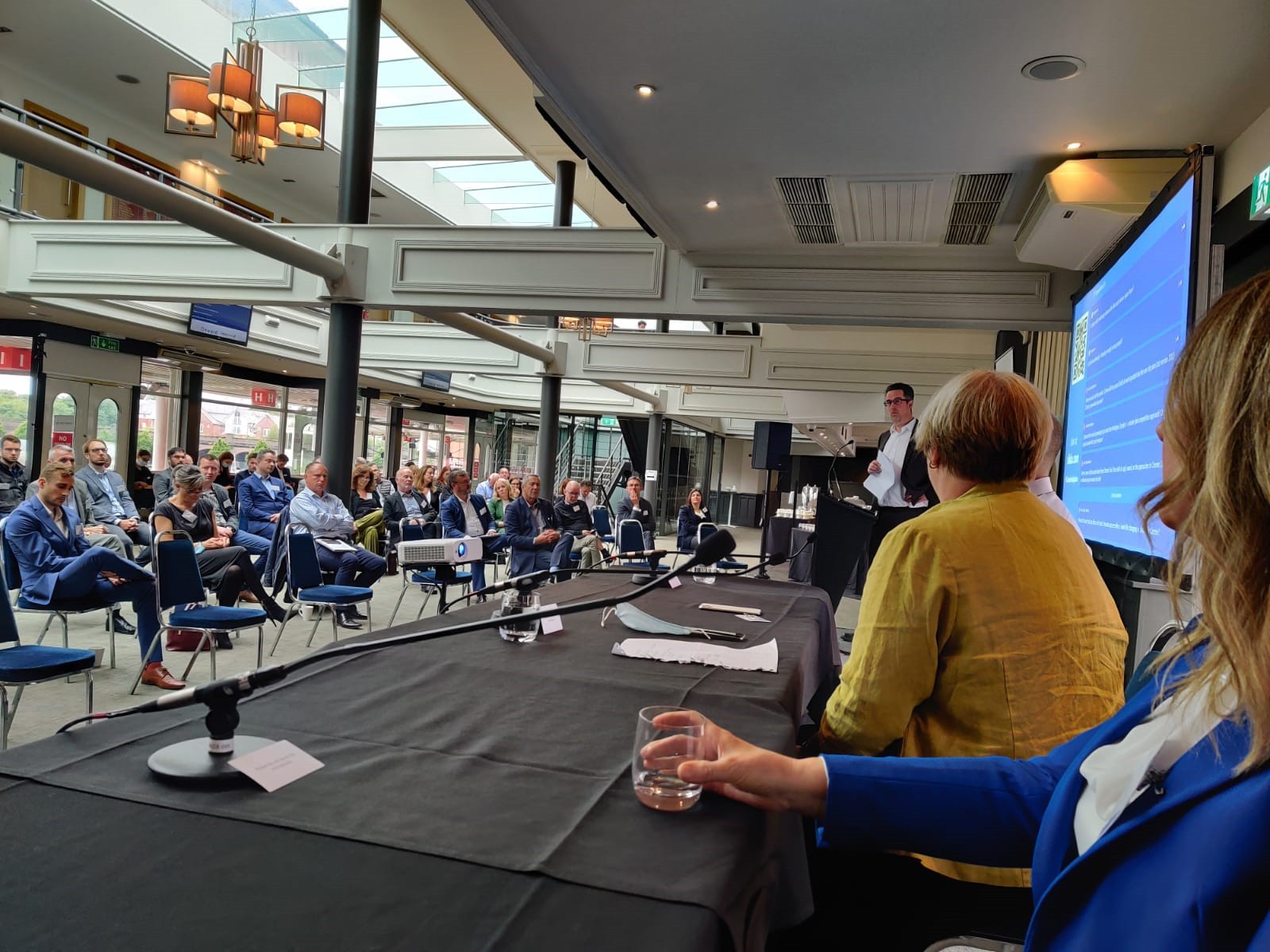
After the welcome from Place North West Principal Paul Unger, we had a really informative presentation from Peter Carstensen (Chair, Chester Growth Partnership). Peter highlighted three key projects as part of the ten year 'One City Plan' (1) Northgate (2) City Gateway and (3) City Place.
The 'One City Plan' was set about ten years ago as a 'framework' to encourage how space/place is utilised with multiple private land owners, to make better use of space (as oppose to a quick win for private owners) and promote collaborative working. He used Chester Racecourse as a great example of PPP. Peter was crystal clear on setting the record straight (on several occasions) that the Chester Northgate 'IS NOT ANOTHER SHOPPING CENTRE'.
I really liked hearing from Max Walker-Williams (Founder, Walker & Williams): residential operator (but not as we know it), paired with hotel services (5 star) - luxury offering. Apart-Hotel focused operator/developer with second site in for planning, including cottages with hot tub. Planning is the biggest barrier. Definitely an option for the Robson family staycation.
Fascinating fact (that I didn't appreciate beforehand) from Katrina Kerr (Chair, Chester BID): 8 Michelin Star entries (!), very buoyant F&B with unique offering, success on smaller units within retail, led by entrepreneurs + SME's. Universities driving students into the city through a change in teaching locations + style of delivery, obviously applauded by Chester BID. Arts Centre (Storyhouse www.storyhouse.com/) best outside London, who knew?
Top speaker for me was James Nicholson (MD, Harlex Property): planning is a problem everywhere not an issue bespoke to Chester. Interesting point made on investing in the planning system! Time is money!
Coffee break is always welcome...I bumped into two industry contacts whom I've known for many years, trusted contacts. One mentioned an opportunity that we/Project Four could get involved with (Ace - smiley face) and the other highlighted some really useful information about the Fire Safety Bill (which I will take away and share with the team) - which you would NOT get from Teams or Zoom.
Heather Standidge (Associate, Development + Strategic Advisory, Cushman & Wakefield): lots happening across Cheshire Towns, pandemic has worked well for changing patterns in favour of towns. Vitality plans for smaller town centres - more funding than ever for town centres.
Sandy Livingston (Executive Director of Property, Onward Homes) spoke passionately about their business (Being a Jock in the room he wasn't keen on talking football) with a positive outlook for Onward moving forward. He touched on the challenges of merging five housing associations and the local agenda. Other key highlights: funding planning offices better, resources desperately needed. The Pandemic has seen increased in opportunities for Onward, this could be down to how Onward operate, deliver and not as market sensitive as others. Connectivity critical to sites and success.
Rethinking where we work + live...interesting angle and the points made by Simon Kennish (Property Director, Bolesworth Estate): Echoed Heather's comments- surge in rural interest for resi and commercial (on smaller scales 1,2,3 desks), larger offices being offloaded. Changing events to reflect restrictions, noting the Balloon festival in August! Power supply and internet is a huge restriction, and Bolesworth are investing in this to ensure infrastructure in place (issues across all rural areas). If the commute doesn't tip employers out of cities, it will shift employee patterns - staff will dictate a shift. Convinced - if it's made harder to get into the cities, rural areas will benefit and employers will struggle, causing recruitment issues - hybrid offer needed. Look out for the Place North West Tour of the Bolesworth Estate.
Last but by no means least Ben Thornley (Chartered Town Planner, Cassidy & Ashton): Landlords looking to enhance their existing portfolio, decline in retail, larger units being broken up and/or turning into residential. Manufacturing and industrial requirements for clients is off the scale. Changes in working and living patterns - need for wider education for councils on this shift. Viability issues surrounding the building of homes to a zero carbon / carbon reduction spec - aim for above minimum but simply not feasible in most cases. Desirable YES, feasible NO.
Bit longer than usual, but there was so much to take in and capture - next event in Manchester 1st July 'Meet the Authorities'.
Have a boss weekend!
Back in the Room With the Liverpool Property Club
Today saw the return of the Liverpool Property Club and not on bloody Zoom. Face to face felt good, a sunshine-filled morning in Liverpool (and a big boat as a back drop). Great to see so many familiar faces and some new ones too, and to hear from Tony Reeves, Stephen Cowperthwaite + Colin Sinclair. This is my very brief summary on the key points discussed.
Colin Sinclair kicked off proceedings at the Liverpool Malmaison + discussed the change in office dynamics, productivity levels, mentioning that he feels (and I agree) that the timescales for people returning to offices/cities highlighted in the Centre of City Report will be greatly improved; we are already seeing the Liverpool City Region bucking the trend, and getting back to it. Colin also touched on the issues surrounding career development + opportunities being greatly improved with offices returning. Colin was also keen to highlight the need for quality workspaces, that offer more than a desk, providing better experiences for staff.
Colin's final point of interest, was that we/the Liverpool City Region (like others regions) have a real shortage of labs, and the need for quality developments/place making to connect these workspaces with the public - using the recently completed Spine and forthcoming Hemisphere as perfect examples.
Next up was Tony Reeves of Liverpool City Council, the man tasked with leading Liverpool back to credibility and trust, something I am confident he will do. There is going to be 'some hard yards' as LLC must get it right now. Liverpool has stuck its/their head above the parapet, a dynamic + pioneering approach has meant we are the most progressive city in the western world - this helped with securing the mass pilot testing. Liverpool is fighting back.
Tony sympathised with the room of property + development professionals, and understands the frustrations - but transactions will be slower for now, no room for failure if we are to push forward. Commissioner's involvement not great, but so much better than a full take over. He highlighted that the Liverpool City Region appeal to funders, investors + developers is evident, and bigger hitters like L&G are interested.
UNESCO World Heritage bureaucratic nonsense can 'do one'. UNESCO wanted all planning decisions for the whole City Region stopped/paused.
Last up, but by no means least, Stephen Cowperthwaite of Avison Young + who heads up the MIPIM Partnership for Liverpool. Avison Young commissioned report proves that the so called 'death of cities' is bull. The MIPIM offering has evolved and is not just about five days in Cannes (that's just the good bit), but about a year round programme of events + support for the private + public sector partnership. As part of this evolution, the MIPIM Partnership will be rebranded 'Liverpool Place Partnership'. Stephen used the three P's to describe how Liverpool strategically tackle the fight back + at MIPIM...PROMOTION, PLACE, PARTNERSHIP.
The one re-occurring message mentioned by all speakers, was the need for QUALITY developments and a real focus on placemaking, connectivity + sustainability.
So - a tough couple of months ahead for LCC, but doing things right and ensuring trust + credibility is restored. Much to be positive about and shout out about, onward + upwards! Look out for the next Liverpool Property Club social event in July - date TBC shortly by Downtown.
Oh Manchester...! New home for Project Four
It was on, then it was off...a bit like the last 12 months, in all parts of society. But now is the time to make the move, and we are delighted after viewing many spaces to announce our new home in Manchester - will be Blackfriars House, just off Deansgate.
Although this feels like a big step and a new era beckons, as a business Project Four have had a presence in Manchester from day one of setting up (01/03/2017), and for many years before that. Working with clients strategically on a retained basis and on some key projects, quietly delivering away under the radar.
Professionally, both Directors have worked in Manchester for many years working on some great projects, such as Manchester Airport Group with Laing O'Rourke, Major Redevelopment of City Tower with Bruntwood, No.2 St. Peters Square with Mosley Street Ventures and Proton Beam Therapy Unit with The Christie NHS Foundation Trust.
More recently we are working on projects with One Heritage, Glenbrook, Sheppard Robson, Robertson, Fletcher Rae Architects, Cert Properties, JDA Architects, Commercial Estates Group (CEG), Wates Construction, Buttress Architects, Shedkm Architecture, Studio Egret West, U+I, Ultimate, and Peel Land + Property to name a few.
To compliment our head quarters on Liverpool Waterfront, at Avenue HQ (AHQ) Mann Island we have seen first hand the benefits of co-working and working with our landlord to support the growth of the business over the last four years. Initially, taking 'hot desk space' at AHQ evolving through fixed desks, small office and three moves later (within the same building) we have 12 person office (and looking at the next move later this year). There are many positives that come with this setup - social events, breakout spaces (couches, arm chairs), meeting rooms, boardroom, parking, city centre vibes to name a few.
Project Four also have office and meeting space at East Parade in Leeds City Centre to support our Yorkshire client base. Taking this strategy to Birmingham and London later this year, following clients and projects. Ultimately we don't need huge office space, but a space to meet the team, socialise and open up to clients for 1-2-1 meetings, hosting design team meetings and (when restrictions lift) hosting networking and CPD/training events for clients and the construction industry.
To support our arrival at Blackfriars we have also been busy on the recruitment front + are very excited to make those announcements very soon also.
Heather Gray of Bruntwood Works "We're absolutely thrilled to welcome Project Four Safety to Blackfriars House, and that they've chosen our Pioneer site for their Manchester HQ. They have shown incredible growth aspirations over the past year, and we think they'll fit right into our community of inspirational, community led organisations." Heather was extremely helpful and instrumental during the viewing/selection process for our new Manchester based.
We really are excited about this new phase of our business and look forward to being able to invite our nearest and dearest to a face-to-face office launch, when we are able. As always...onward + upwards.
Eleven Tips for Project CDM in 2021
During our final team meeting of 2020 we decided to pull together our 11 top tips, and put into simple terms - so here they are:
1. DEVELOP THE CLIENT BRIEFING.
Very rarely done effectively (from a CDM perspective) + is a missed opportunity to set the tone of the project, in relation to CDM compliance + engagement.
2. EARLY APPOINTMENT (OR AT LEAST ENGAGEMENT/CONULTATION).
The appointment of CDM advisors or PD/PD support at the earliest opportunity – we can add greater value + be better positions amongst the team. We can always undertake an initial desktop appraisal to offer initial consultation for the project – offering at least minimum compliance from the onset
3. GET APPOINTMENTS NAILED DOWN PROPERLY.
It is important that appointments + scopes are correct and agreed. To often we see a mish mash of client + principal designer duties. We promote + encourage the APS Form of Appointment, the industry benchmark.
4. ENSURE DUTYHOLDERS UNDERSTAND/APPRECIATE THEIR OBLIGATIONS.
At P4 upon appointment we ensure that we deliver a strategic project briefing to ensure that all key stakeholders are fully briefed, understand their obligations + what the client expects.
5. REGARDLESS OF ROLE – AGREE THE DESIGN RISK MANAGEMENT STRATEGY FROM DAY ONE.
- One global hazard + risk register (set a tab up for each discipline) – reduce paper work.
- Notes / symbols on drawings
- ACM Strategy
- Report on compliance
6. DON’T IGNORE THOSE MUNDANE – PAIN IN THE BACKSIDE STATUTORY OBLIGATIONS.
- SKET Assessments (formerly referred to as competence assessments) – have you done these? We can provide templates if needed.
- Pre-construction information – eliminate + reduce generic guff – project specific information, don’t duplicate + ensure shared amongst the team for feedback (gap analysis).
7. FOR GODS SAKE – ENSURE CDM + PD IS ON THE MEETINGS AGENDA.
Too often do we attend meetings – and CDM isn’t on the meeting or is stuck right at the bottom.
8. DON’T KEEP DOING THE SAME THING + EXPECTING DIFFERENT RESULTS.
- The changes to CDM IN 2015 were a significant shift + fundamental change to the structure of the regulations – don’t keep applying the same approach as 1994 + 2007. Embrace the change.
- We hear / see many different attitudes towards CDM obligation (statutory obligations – not an optional extra) – change within the industry is needed.
9. REDUCE UNNECESSARY MEETINGS.
We accept meetings are an essential part of project delivery, particularly at pre-construction for creating collaborative working, design development...but meetings alone do not dictate CDM compliance.
At P4 we will discuss + agree (set expectations) meetings attendance from day one – requesting a slot within the meeting once initial setup satisfied.
10. BE READY - SHIFT IN HSE FOCUS + ENFORCEMENT/INTERVENTION.
We are seeing a real shift in the focus of the Health + Safety Executive in that we are now seeing other duty holders, other than the PC being targeted. This is a positive for the industry but compliance levels need to improve across PD’s and clients.
11. ENGAGE + VALUE PROJECT APPOINTMENTS.
CDM is not just box ticking + paperwork, though our profession has a bad reputation – CDM applied properly can offer real project value from pre-construction through until + beyond operation/occupation.





